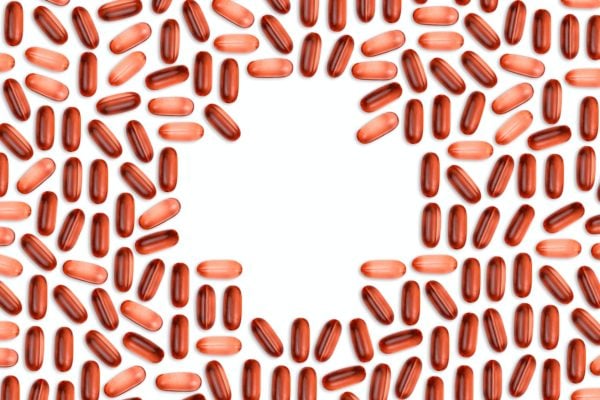No matter what kind of healthy lifestyle you hope to follow, knowing how to read a nutrition label is essential. Whether you’re keeping track of sodium for high blood pressure, or carbohydrates for diabetes, nutrition labels can provide vital information to help you stay healthy.
However, it can be confusing to understand if you’ve never read a nutrition label before. Thankfully, we’ve got you covered! In this article, you’ll learn what a nutrition label is and how to read them to benefit your health.
What Is A Nutrition Label?
A nutrition label is a panel on food and beverage products that help the consumer see how much of the major nutrients are in a particular product. The label first defines the product’s serving size, such as one cup. Then, it tells you how many of those servings are in the product package. Next, the label below the noted serving size will show how much of each major nutrient is in that serving size.
The United States Department of Agriculture recently updated the nutrition facts label, which is the first update in about 20 years. The latest updates includes the following:
- Larger and bolder font for the serving size and calories to make it easier to view.
- Updated recommended daily values for each nutrient listed. The daily value shows how much of a certain nutrient is in a 2000-calorie diet. Any nutrient with a daily value of 5 percent or less is a low value, while a nutrient with a daily value of 20 percent or more is a high value.
- Addition of added sugars, potassium, and vitamin D to the nutrition label
What Nutrients Does A Nutrition Label Contain?
Aside from serving size, the number of servings, and calories per serving, a nutrition facts label contains the following nutrients:
- Fat: Along with total fat, nutrition labels also report the amount of saturated and trans fat.
- Cholesterol
- Sodium
- Total Carbohydrate: Along with total carbohydrate value, nutrition labels will report the amount of total sugar, added sugar, and fiber.
- Protein
Below the major nutrients label is a small section where the daily values of essential vitamins and minerals are located. This includes:
- Vitamin D: This fat-soluble vitamin is essential for bone health. It helps calcium better absorb into the body. Vitamin D is in fortified milk, orange juice, cereals, eggs, and fatty fish like salmon and sardines.
- Calcium: Calcium is vital for bone health and is in dairy products like milk, cottage cheese, yogurt, and cheese, as well as leafy green vegetables like spinach and kale and protein-rich foods like tofu and fish like canned salmon or sardines.
- Iron: Iron is an essential mineral component of hemoglobin, a red blood cell protein that helps transfer oxygen from the lungs to the tissues. This mineral is in foods like beans, lentils, leafy green vegetables, peas, oysters, beef liver, and fortified cereals.
- Potassium: This mineral is vital for normal cell function and is in foods like lentils, kidney beans, acorn squash, and potatoes, as well as dried fruit like dried apricots, raisins, dried prunes, as well as bananas, and tomatoes.
Basics Of Nutrition Label Reading
Nutrition labels can teach you how much total energy and macronutrients (carbohydrate, fat, and protein) are in a serving of foods and beverages and how many sub-nutrients are in a food or beverage product. These sub-nutrients include the types of carbohydrates like sugar or natural sugar, as well as added sugar and fiber.
For example, one cup of cow’s milk contains about 12 grams of natural sugar. However, if you look at flavored milk, like chocolate or strawberry-flavored milk, it will contain natural sugar and added sugar in the flavoring.
A nutrition label also shows how much of the less healthy fats a food or beverage contains. These fats, also known as saturated fat and trans-fat, can increase one’s risk of heart disease if eaten regularly.
How To Use A Nutrition Label To Benefit Your Health
You can use a nutrition label to estimate how much of each nutrient you eat at meals, snacks, and drinks. And by doing this, you can help lower your risk of developing chronic diseases such as heart disease and diabetes, as well as manage those conditions that you may already have.
When managing diabetes, you can use a nutrition label to figure out how many carbohydrates you eat at each meal. You’ll want to limit the amount of total sugar and added sugar you consume while increasing the amount of fiber you consume each day. Experts suggest that most people limit their added sugar intake to no more than 10 percent of their total calories.
Regarding fiber, the average adult should consume about 14 grams of fiber per 1000 calories consumed or more daily to support digestive health and to help stabilize blood glucose levels throughout the day.
When it comes to heart health, you will want to limit the amount of sodium you consume daily. This will help manage blood pressure levels. Also, you will want to limit the amount of saturated and trans fats you eat daily while consuming healthier or unsaturated fats. Unsaturated fats are primarily in plant-based foods like nuts, seeds, olives, and avocado, plant-based oils. Some examples include olive oil and fatty fish like salmon, trout, or mackerel.
Wrapping It Up
Nutrition labels can benefit those looking for healthy foods to include in their diet. By reading through the nutrition labels, you can make informed decisions on which foods will provide you with the most nutritional value and how they fit into your overall dietary goals.
And if you find that you don’t eat enough of your major nutrients from the food and beverages you consume daily, you can use the nutrition labels to determine which dietary supplements may help you meet your nutrient needs and be your healthiest self.




